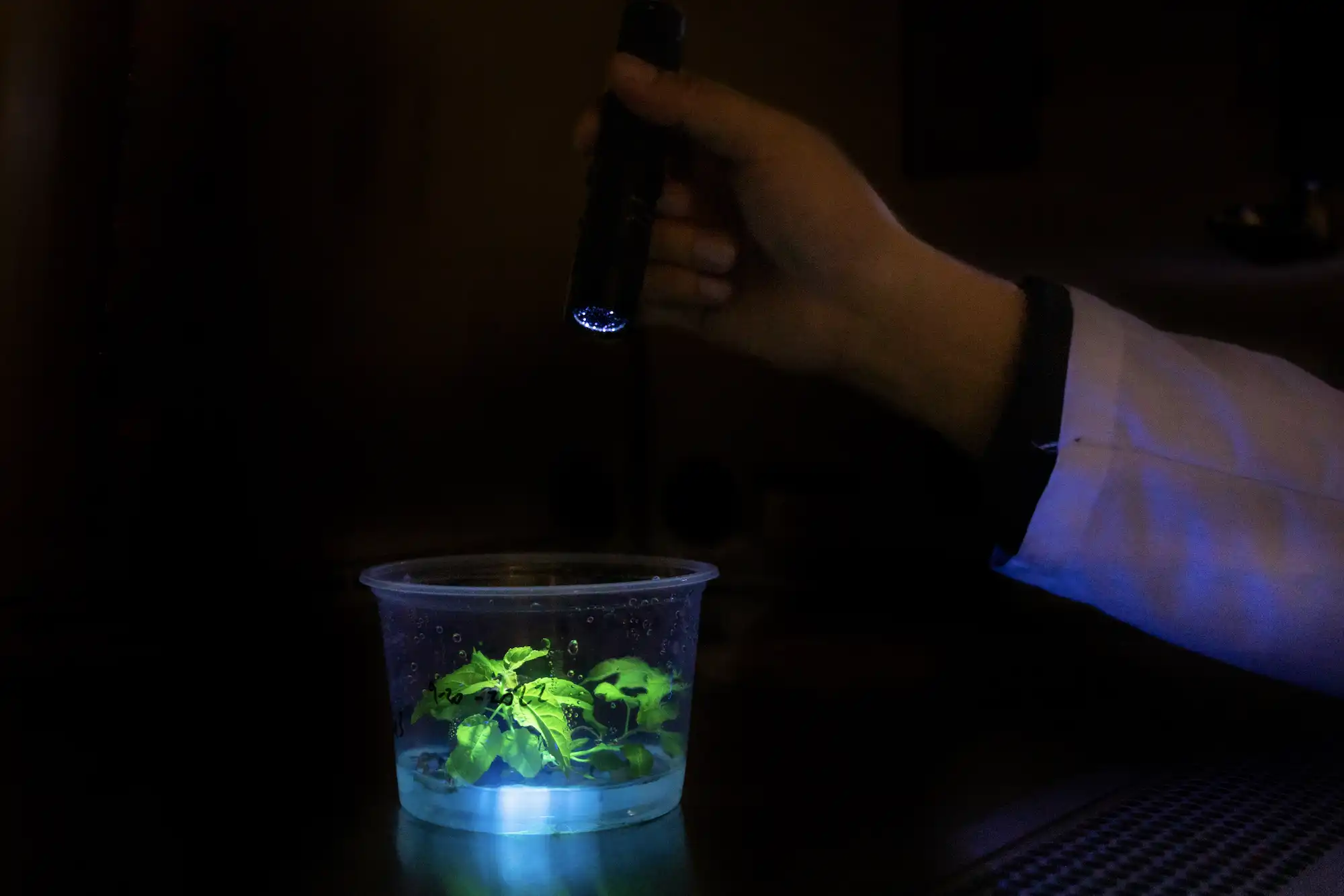In a discovery aimed at accelerating the development of process-advantaged crops for jet biofuels, scientists at the Department of Energy’s Oak Ridge National Laboratory developed a capability to insert multiple genes into plants in a single step.
“As we try to meet the goal of a zero-carbon aviation industry by 2050 with sustainable fuels, the challenges are tremendous — technically, economically and biologically,” said Jerry Tuskan, chief executive officer at the ORNL-led Center for Bioenergy Innovation, or CBI, which directed the research. “Having the ability to test multiple genes simultaneously will speed up that process and increase the probability that we will achieve the nation’s goal of displacing 100% of petroleum-based aviation fuel by 2050.”
The plant transformation technique, known as gene-stacking, replaces the painstaking method of inserting one gene at a time into a targeted plant’s DNA and then sequencing the plant to make sure the genes are in the right spot and have the right orientation to trigger the desired physical traits.
Genes do not operate in a vacuum. Complex traits researchers want, such as faster growth and drought tolerance, are often controlled by multiple genes. Traditional genetic engineering involves adding one gene and its associated biochemical machinery to plants, proving it works, then taking that plant material and transforming it a second time with another gene and proving that works, then a third gene and so on, in a complex, time-intensive process.
“It is much more efficient if you can do all that in one transformation,” said Tuskan, who also collaborated on the research.
The ORNL scientists created a new delivery method by using protein segments called inteins that have the natural ability to split off from larger proteins and then splice back together to create new proteins. Researchers used the inteins to create a split selectable marker system that simultaneously inserted four genes into plants, including genes that “mark” or identify transformed cells, support their stability and make the edits detectable by biosensors.
The technique, described in Nature Communications Biology, was demonstrated on tobacco, the model plant Arabidopsis thaliana and the biomass feedstock poplar.
The resulting hybrids were examined using ORNL-developed, light-based biosensors that indicated the new genes were integrated into the plant. The findings were confirmed by examining plant DNA.
The project “is the result of years of research at CBI dedicated to creating hardy bioenergy feedstocks that grow in less than ideal conditions,” said ORNL project lead Xiaohan Yang. “We want to stack traits in poplar that make the tree economically viable to grow and process for jet fuel.” The new gene-stacking capability is easily implemented in existing plant transformation pipelines while enabling much faster results, Yang said.
As part of its mission to develop a sustainable, non-food feedstock crop for clean aviation fuel, CBI has identified genes that control plant traits like higher yield, biomass composition that lends itself to being more easily processed into biofuels and drought tolerance.
Yang and colleagues have begun working on an iteration of the technique to insert 12 genes at once — 10 related to biological functions in poplar and two markers. Yang said it is feasible that the technique could be refined to support the stacking of as many as 20 genes.
“We’ve demonstrated that we can apply these new methods for building plant constructs in a predictable and more efficient manner that requires less downstream validation and testing,” Tuskan said. The new capability “goes beyond an incremental improvement in the current technology and is the culmination of a lot of people’s efforts, representing a significant step forward in our ability to transform plants.”
ORNL’s Kuntal De, Yang Liu, Torik Islam and Wellington Muchero — along with former ORNL researchers Guoliang Yuan, Haiwei Lu and Mahmudul Hasson — also collaborated on the project.
Read the paper: Communications Biology
Article source: Oak Ridge National Laboratory
Author: Stephanie Seay
Image: A plant that has been modified using the CRISPR gene editing system glows bright green under a light-based biosensor developed at ORNL. Credit: Genevieve Martin/ORNL, U.S. Dept. of Energy








